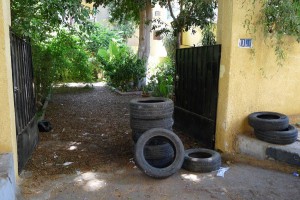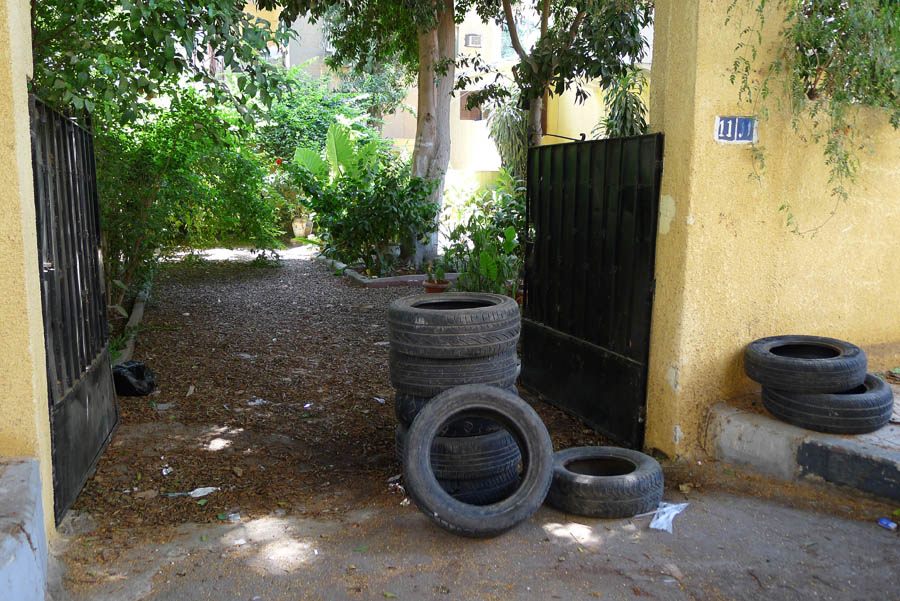
Beirut Facebook page
Every few steps you find candles. Outside, a well-kept garden was buzzing with insects you would, and only could, expect on agricultural land. The place is a 1940s villa in Agouza with three stories, a reading room and a beautiful rooftop. This was not what I had expected.
My expectations were more along the lines of a rundown apartment in a generic, but signature, downtown building where the local street dog and its fleas were fed twice a day. Yet the clean (but not sterile) and recently renovated villa I came across insisted, with unmistakable directions, that it was my destination.
The villa hosts Cairo’s latest art initiative titled “Beirut.” The space was founded and is being directed by Jens Maier-Rothe and Sarah Rifky and the opening night also inaugurated “Global Slum,” the work of Pakistani-American, Maryam Jafri.
The idea behind Beirut was in the works for a long time, said Rifky. “We wanted to create a space where these art practices that were not reaching audiences here could have exposure. We want to investigate questions of art that do not necessarily pertain to politics or culture.”
Jafri’s work revolves around sites where ‘images are produced’ and is described as a documentary photo and text work. It features sites that simulate other places or times and which are locations of labour. Though the pictures were not taken by Jafri herself, the work lies in assembling them, finding the commonalities and creating something new.
A reading room contains some of Jafri’s own books and can give some additional insight into the exhibition for the audience. But Jafri insists that this kind of context is not necessary “unless the audience wants it” and that all interpretations are equally valid. “I may be the kind of person who would appreciate that kind of insight but others may not be, so only if they want to know more then they can. Otherwise, the exhibition is accessible to everyone regardless.”
The exhibition relies heavily on the images and more so on the way they are assembled. “The images I used are from image banks; corporate, private, et cetera and today in 2012, the subject matter is not new. Sites that simulate other places have been done before, it is the way you put them together that makes for something new. The project has little text but it stresses imagery and the visual aspect,” said Jafri.
“One way the project urges us to ask questions on labour is through thinking about these places as sites of work and employment. They are physical and need to be built, sometimes from the ground up. In the case of the cities built by the army in the Mojave desert to simulate Iraq, Hollywood experts often supervise the simulations, and the cities make us think of our own relationship to people who work in representation and who are often neglected. They make us think of how important war is to the economy and, in turn, how important these simulations are to the economy as well,” added Jafri.
Beirut is now officially open, having been christened by Jafri’s work, and is planning a host of other events and activities that will keep Cairo’s artistic community entertained and surprised.




